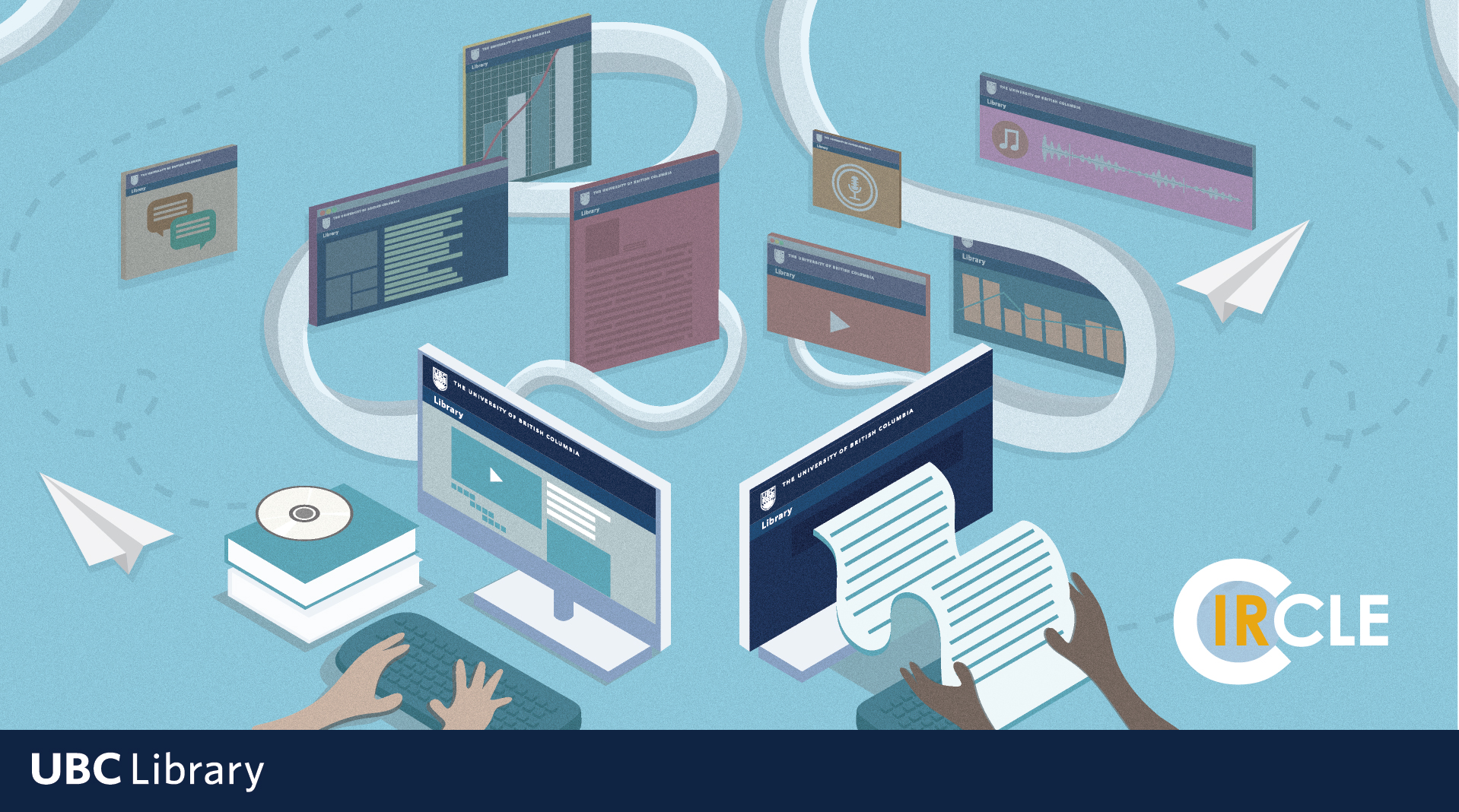
“We’re trying to make the complex appear simple,” says Tara Stephens-Kyte, a Digital Repository Librarian at cIRcle who knows exactly how much work goes on behind-the-scenes at UBC’s institutional repository to create that seamless experience for content creators.
What started as a pilot project in 2007, has become the central digital archive for published and unpublished works of scholarly research and open educational materials created by members of the UBC community and its partners. While cIRcle is a technology-driven unit within UBC Library, relying on open source software like DSpace and other automated tools like Archivematica to preserve their collections, the work is undoubtedly people-focused as the human services provided by the team are key to its success.
The small team, which includes Stephens-Kyte, Digital Repository Librarian Amber Saundry and Digital Repository Specialist Kelly Gauvin, means each member wears many hats. Together, they offer one-on-one support to UBC researchers and others who opt to deposit their scholarly outputs in cIRcle.
“We’re trying to make it easy for people to access the content and to also provide a holistic search experience for the library’s digital collections,” says Stephens-Kyte, noting that for their mediated deposit service, they do a lot of consults with content creators on metadata standards and licensing. “For some people, that’s the first time they’ve ever really thought about the ownership of their content. And a lot of that conversation comes in the context of us asking for permission to distribute the content, and thinking about where that content lives and what happens with it once a project is done.”
This academic year especially, the work at cIRcle has not only increased but taken on a new level of importance for UBC faculty, staff and students. As conferences were cancelled starting in March 2020 due to the COVID-19 global pandemic, Stephens-Kyte notes that there was an increased uptake in deposit submissions as there was now an abundance of research activity that suddenly had no outlet: “Now, I think it’s more about people coming to terms with the idea that there may be more permanent changes to the way that we do research, talk about research and connect.”
According to their Impact and Activity Report for 2019/20, cIRcle celebrated a major milestone with 70k open access items now available in their collections. Notably, faculty deposits have been increasing year-over-year, with more than 2.3k deposits of faculty, researcher and postdoctoral materials in the past fiscal year alone.
But it’s the community-partner projects that cIRcle has supported this year that signal real change, like the Downtown Eastside Research Access Portal (DTES RAP), which launched in October as a collaboration led by the Making Research Accessible initiative (MRAi), a partnership between the UBC Learning Exchange and UBC Library’s Irving K. Barber Learning Centre.
“We expanded our acquisition policies to support that,” notes Stephens-Kyte. “It’s a project of such local significance, it’s so important to our community and the work that UBC does. So to me, that’s the kind of work that I think an open access repository can really foster, support and encourage.”
Learn more about adding scholarly content to cIRcle by visiting their website.
About the UBC Library Open Publishing Program
UBC Library’s Open Publishing Program is an open access journal and text service to help UBC faculty, researchers, instructors, students, and staff develop open access publications for scholarship and instruction. This free service aims to advance open scholarship by providing the supports needed to make UBC information resources openly available. Learn more about our eligibility criteria and how to submit a proposal.
This project is part of UBC Library’s strategic direction to inspire with innovative spaces and services.
Learn more about our Strategic Framework.
